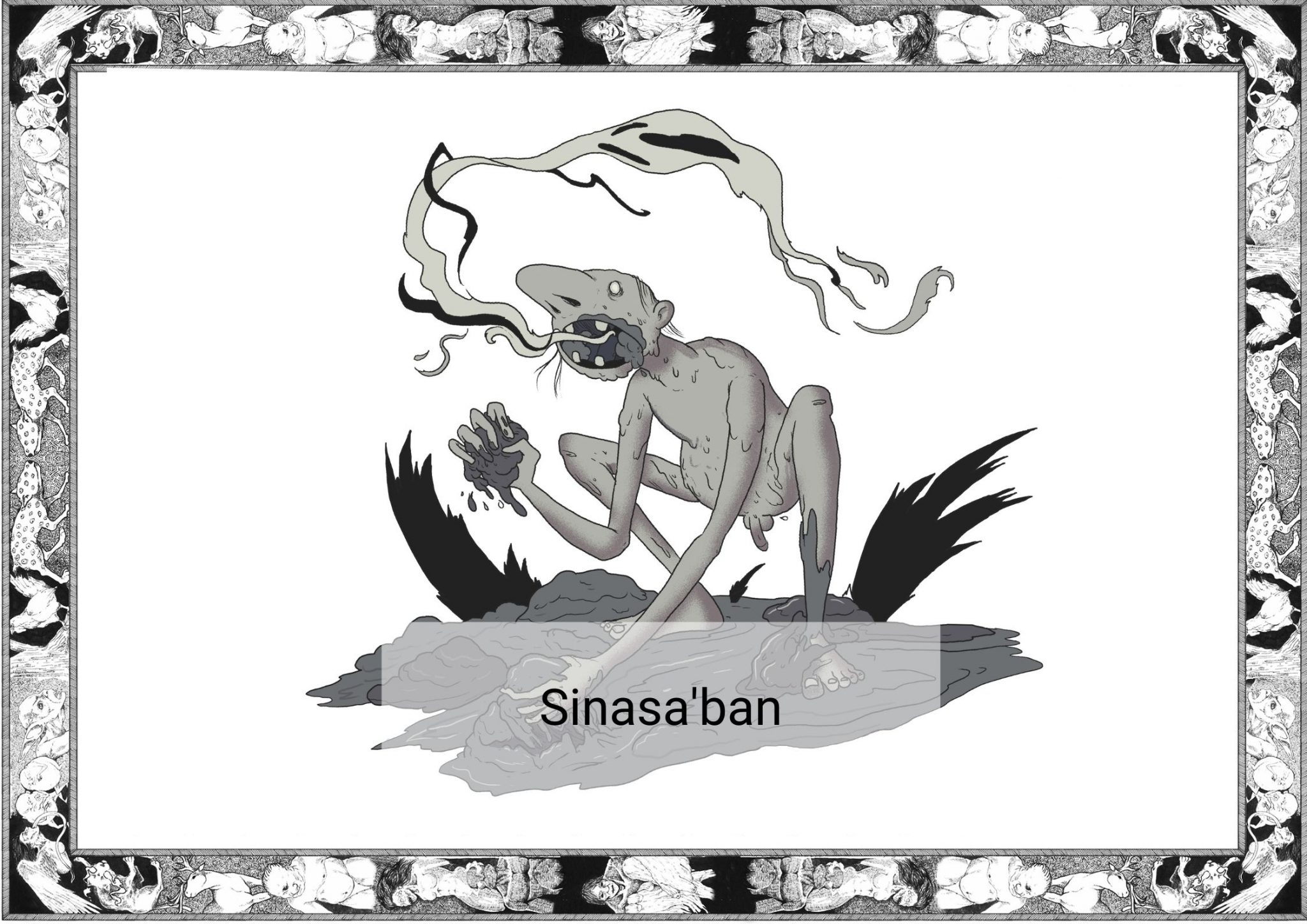
From the notes of Mari Bas:
As I was going through the Bicol region I came across a particular kind of aswang that piqued my interest.
Its form was a being as black as night, terrifying to behold. Yet it was not as aggressive as others of their kind.
The elders say that only the sick should fear the sinasa’ban since it does not hunt for flesh.
I asked them what it feeds on and they simply said “the waste of humans”. Not knowing what they meant, I followed one of the creatures for a week, seeking to know its secrets.
I recall my knowledge about the olfactory organs. That the ability to smell comes from sensory cells directly connected to the brain. Smells reach either through the nostrils or through the channel that connects the roof of the throat to the nose. The sense of taste goes hand in hand with the sense of smell. When the nose is congested odors can’t reach the sensory cells stimulated by smell.
That information made my discoveries about the sinasa’ban all the more disgusting.
The beast is intoxicated by fetid smells, particularly the phlegm and excreta of the sick. Even the faintest scent sends it into a state of elation. It seeks the cause of the smell, hunting like a rabid dog, guided by the smell.
It was fortunate that one of my guide’s family members fell ill. I was able to observe the creature during its hunt, as it were.
The sinasa’ban came from the trees it called its home and, seemingly possessed by the smell, locates the sick person’s abode. And then, like clockwork, every night satiates its unnatural hunger. I saw that the ill person had taken a turn for the worse once the sinasa’ban started to feed.
I consulted with the elders of the village and they said that the creature slowly absorbs the victim’s life essence, causing the poor soul’s illness to progress.
I was not able to observe the creature further as my guide and others from his village chased it away, and it would be remiss of me to want to have the sinasa’ban claim a life just so I may know more about the beast.
I leave the region in a few days, time I spent going into the forest hoping to find the sinasa’ban in its natural habitat. I asked my guide to help me collect the dung of carabaos, which lured the creature out from its hiding place.
It cannot be put into words the sheer nausea I had watching the creature eat excrement and it seemingly enjoying it. I noted that the carabaos seemed to get more exhausted as the creature was feeding, it seemed that the elders were correct in their assertion.
The sinasa’ban remains a curious creature, dangerous in its own way.
I hope I will never have to smell its presence ever again.
=———————————————————————=
Written by Karl Gaverza
Copyright © Karl Gaverza
Inspired by the Sinasa’ban description in Merito B. Espinas, ‘The supernatural world of the ancient Bikols,’ in Unitas, vol. 41, no. 2, 1968 pp. 188-189 in Intersections: Gender and Sexuality in Asia and the Pacific
Monograph 1: The Philippines at the Turn of the Sixteenth Century – Malcolm W. Mintz (2011)
Illustration by Rob Cham
FB: https://www.facebook.com/robocham
Website: robcham.com
Twitter: twitter.com/robcham
